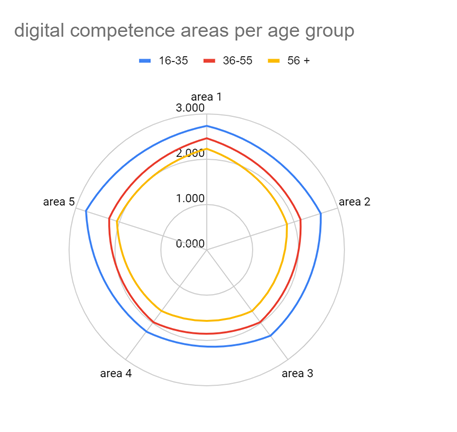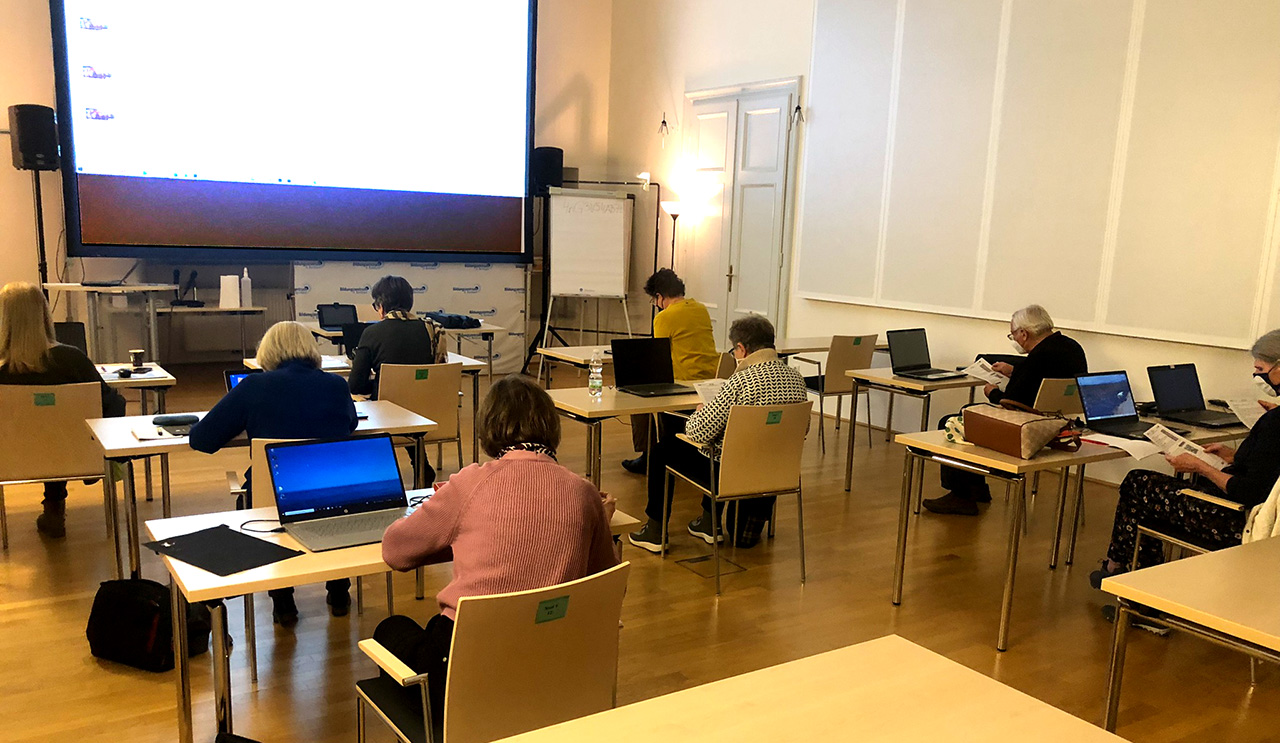The generation 65+ and digital competencies
This generation has undoubtedly not grown up with digitization. Nevertheless, the generation 65+ has to face the modern world with digital technology. Filling up with a debit card at a fuel terminal is now taken for granted, as is communication with smartphones. All these technological achievements of recent years are necessary in order not to lose touch with society.
The survey at the beginning of the project showed that older people do indeed have digital skills, but often to a limited extent and distributed quite differently.
Results from the Competence map
Older people are not necessarily people who did not have opportunities to engage with and master digital technologies – many of those who were very actively engaged in creating and developing them would fall into that age group – but for some, likely a majority of them, those opportunities were scant and came later in life making it harder for them to build the competencies necessary to use these technologies better and more confidently. They, like others who did not have these opportunities, are being forced to travel by the wave of digitalization to the world created.
Next, we will be looking at how differences between age groups can further inform us on what these educational contexts should focus on and what to keep in mind.

Variations of the competence levels of different age groups, per competence area. This graphic has been taken from the published Competency Map.
What does this mean?
The DISK courses with older people reinforced the results obtained from the surveys. Most participants had basic competencies in using their device, to write a short text or handle pictures basically (all these items belong to area 1 and partly to area 3).
It was significant that the 65+ group (consisting of people being retired and not so much in contact with computers during their active working life) missed the knowledge and skills described in the DigComp 2.1.
How to supply people from the 65+ generation?
From our point of view, it does not make sense to teach older people digital competencies they do not need in their current life or, if, which they are not interested in. Rather, it would be important to know what people in this age group really need and how to provide them with this knowledge and the appropriate skills. In principle, this means to
- explore and identify the real needs of this age group and
- to create tailored training to supply the interested group with the necessary knowledge and skills.

On-site training with seniors in the frame of the DISK Project. Due to the COVID-19 situation, on-site trainings could only be done under serious restrictions like “physical distancing”.
Feedback from the Pilot Training (in Austria)1
An interesting observation supports and confirms the considerations made above: The learners of the course e-Government (organized by the EFQBL, in Wiener Neustadt) learned about the digital signature – most of the learners came from the generation 65+. During the course, they mentioned that most of them did not have any clue what this is and where you may benefit from it. After the course, all participants cared for a digital signature and had it available within a week (at the next on-site training).
__________________________________________
1 The courses took place in spring 2022 in cooperation with the Austrian Kneippbund, in Wiener Neustadt.

